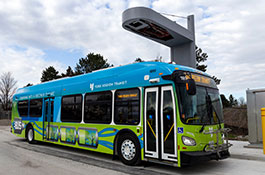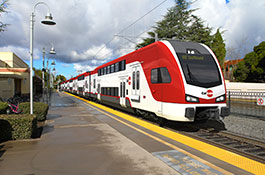
Traction Power and Systems Capacity Analysis for Systemwide Cascade Plan
Optimizing Melbourne's tram network through detailed operations and electrical simulation models
Public Transport Victoria (PTV) | Melbourne, Australia | 2014-2015
The world's largest operational urban tram network
Trams have operated in Melbourne for over100years
System carries206 millionpassengers per year
Challenges
- PTV needed to mitigate potential traction power system overloads as it introduced new, heavier, and higher performance trams to its network, while cascading (redeploying) older tram models to other lines
- Any upgrades to the traction power system needed to be both cost-effective and able to support reliable operation of the new and cascaded fleets.
Solutions
- Utilized our proprietary simulation software, TrainOps® to evaluate the traction power system upgrades necessary to accommodate the new 110 E-Class trams alongside the cascading older trams to other routes.
- Used TrainOps® to model, analyze, and run simulations for 33 proposed traction power upgrades (including new substations and additional parallel feeders) and quantify their ability to support the introduction of larger trams with higher power demands.
- Modeled first order substation failure (N-1) scenarios to investigate the resilience of the proposed system upgrades.
Highlights
- Optimized PTV’s network upgrade solutions to address its rolling stock cascade while reducing overall cost of infrastructure upgrades, allowing capital investment to be spread over a series of staged works.
- 确定了需要至少15个新的traction power substations via TrainOps® simulations and built a total of 16 new substations to accommodate 110 E-Class trams.
Project numbers
475+trams operating in Melbourne504kilometers of double track (313 miles)
1,700tram stops
How we can help you
If you have a problem that needs to be solved, please get in touch.
Related Projects

Technical Advisor for Electric Bus and Infrastructure Loans
York, Ontario, Canada

MaineDOT Bus Electrification Project
Maine, USA

Caltrain Modernization Project
San Carlos, CA, USA

